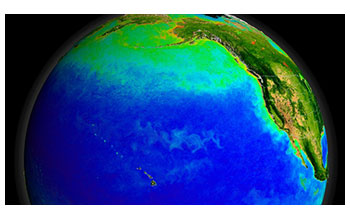搜索结果: 1-11 共查到“大气科学 North America”相关记录11条 . 查询时间(0.109 秒)

Warm oceans helped first human migration from Asia to North America(图)
Warm oceans first human migration Asia to North America
2020/12/31
New research reveals significant changes in the circulation of the North Pacific Ocean and their impact on the initial migration of humans from Asia to North America.The U.S. National Science Fou...
Unraveling the complex local-scale flows influencing ozone patterns in the southern Great Lakes of North America
the complex local-scale flows ozone patterns the southern Great Lakes of North America
2010/11/30
This study examines the complexity of various processes influencing summertime ozone levels in the southern Great Lakes region of North America. Results from the Border Air Quality and Meteorology (BA...
Smoke injection heights from fires in North America: analysis of 5 years of satellite observations
Smoke injection heights fires North America
2010/2/21
We analyze an extensive record of aerosol smoke plume heights derived from observations over North America for the fire seasons of 2002 and 2004–2007 made by the Multi-angle Imaging SpectroRadiometer ...
Organic composition of single and submicron particles in different regions of western North America and the eastern Pacific during INTEX-B 2006
single and submicron particles western North America eastern Pacific INTEX-B 2006
2009/8/7
Single particles were collected from an aircraft platform as part of the Intercontinental Chemical Transport Experiment – Phase B (INTEX-B) conducted over the eastern Pacific and western North America...
Summertime impact of convective transport and lightning NOx production over North America: modeling dependence on meteorological simulations
convective transport lightning NOx production North America meteorological simulations
2009/7/15
Global-scale chemical transport model simulations indicate lightning NOx dominates upper tropospheric O3 production above Eastern North America during summertime but vary in their estimates. To improv...
Increasing ozone in marine boundary layer inflow at the west coasts of North America and Europe
ozone marine boundary layer west coasts North America Europe
2009/3/13
An effective method is presented for determining the ozone (O3) mixing ratio in the onshore flow of marine air at the North American west coast. By combining the data available from all marine boundar...
A numerical modelling study on regional mercury budget for eastern North America
numerical modelling regional mercury budget eastern North America
2009/3/10
In this study, we have integrated an up-to-date physio-chemical transformation mechanism of Hg into the framework of US EPA's CMAQ model system. In addition, the model adapted detailed calculations of...
Air quality in North America's most populous city – overview of the MCMA-2003 campaign
Air quality North America
2008/12/10
Exploratory field measurements in the Mexico City Metropolitan Area (MCMA) in February 2002 set the stage for a major air quality field measurement campaign in the spring of 2003 (MCMA-2003). Involvin...
Transpacific transport of ozone pollution and the effect of recent Asian emission increases on air quality in North America: an integrated analysis using satellite, aircraft, ozonesonde, and surface observations
ozone pollution Asian emission North America
2008/11/24
We use an ensemble of aircraft, satellite, sonde, and surface observations for April–May 2006 (NASA/INTEX-B aircraft campaign) to better understand the mechanisms for transpacific ozone pollution and ...
Interpreting the variability of space-borne CO2 column-averaged volume mixing ratios over North America using a chemistry transport model
space-borne CO2 North America chemistry transport model
2008/11/21
We use the GEOS-Chem chemistry transport model to interpret the sources and sinks of CO2 that determine variability of column-averaged volume mixing ratios (CVMRs), as observed by the SCIAMACHY satell...
Predicting Pleistocene climate from vegetation in North America
pleistocene climate vegetation North America
2008/11/4
Climates at the Last Glacial Maximum have been inferred from fossil pollen assemblages, but these inferred climates are colder for eastern North America than those produced by climate simulations. It ...

